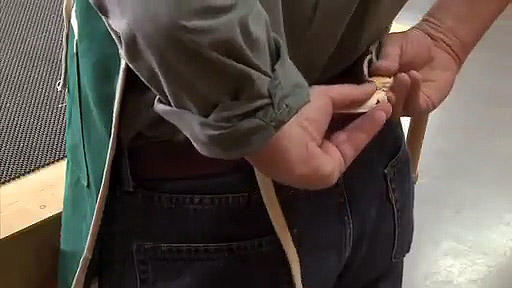Sanding isn’t a glamorous task, but doing it right makes all the difference in the finished project. And, in my shop, the top tool to get the job done is a random orbit sander. Here are a few techniques I’ve learned over the years for getting the best results with one.

Getting a smooth, even finish starts with the sanding pad (photo at lower left). First, it should be fl at from edge to edge. As the pad wears, the edges often round up. And second, there should be no dust or debris between the sandpaper and the pad. Both of these make it almost impossible to get a smooth surface on a workpiece.

I like to use a few simple techniques when I’m sanding with a random orbit sander. The first is to “land” the sander onto the surface in a smooth, sweeping motion, like you see in the top drawing below. To dothis, I hold the sander just off the surface and turn it on. Before the pad reaches full speed, gently sweep the sander onto the workpiece. When you’re finished, simply sweep the sander off the workpiece.

That’s really all there is to it. But there are a few other tips to get top-notch results. One important tip is to vacuum or wipe the surface down between grits. The goal here is to remove any coarse grit and debris left behind from the previous step. If you don’t, it can cause deeper scratches when you move to the next grit.

As you sand, it’s tempting to help the sander along by pressing down hard to get the job done more quickly. But there’s a problem with doing that. The extra pressure slows the sander’s pad down, reducing its ability to overlap swirl marks and minimize scratches. Plus, the pressure may cause the sander’s motor to overheat, shortening its life. Another temptation to avoid is tipping the sander up on edge to “rub out” a large scratch in the surface. While this may remove the mark, it’s likely to create a larger, more noticeable depression. One good way to avoid rounding over an edge is to provide support for the sander as you work. A backer board the same thickness as the workpiece provides the necessary support.











